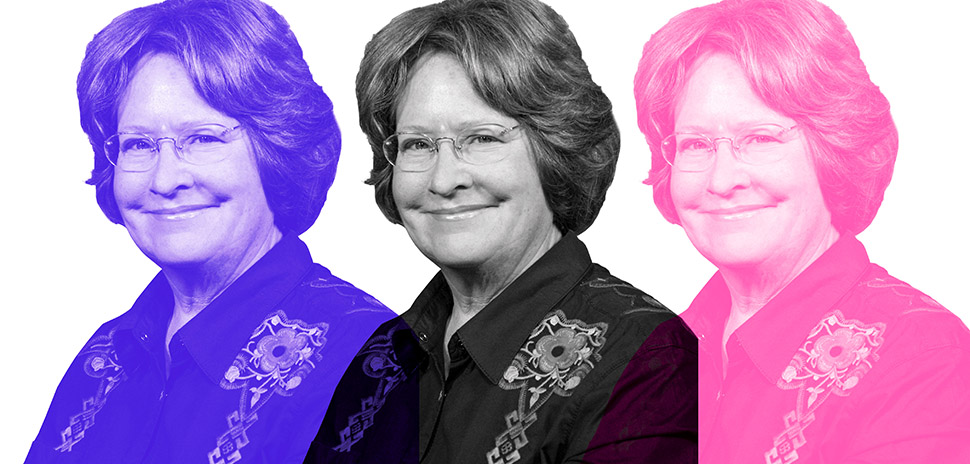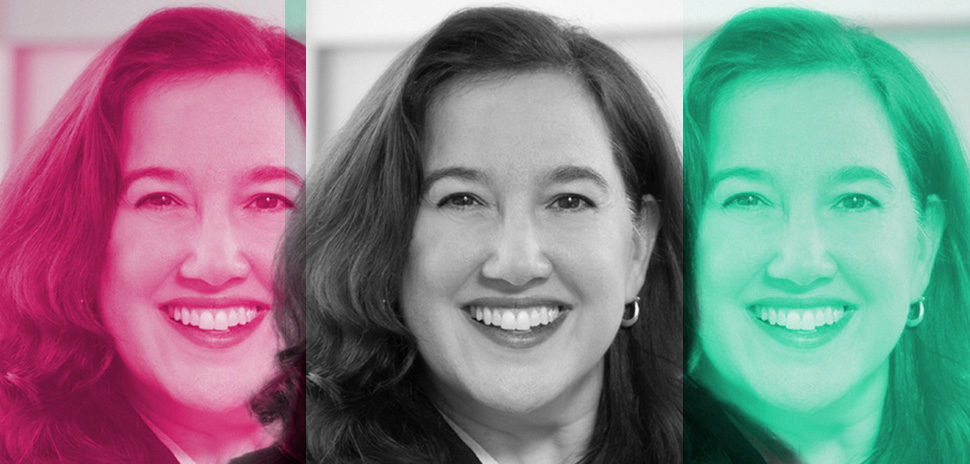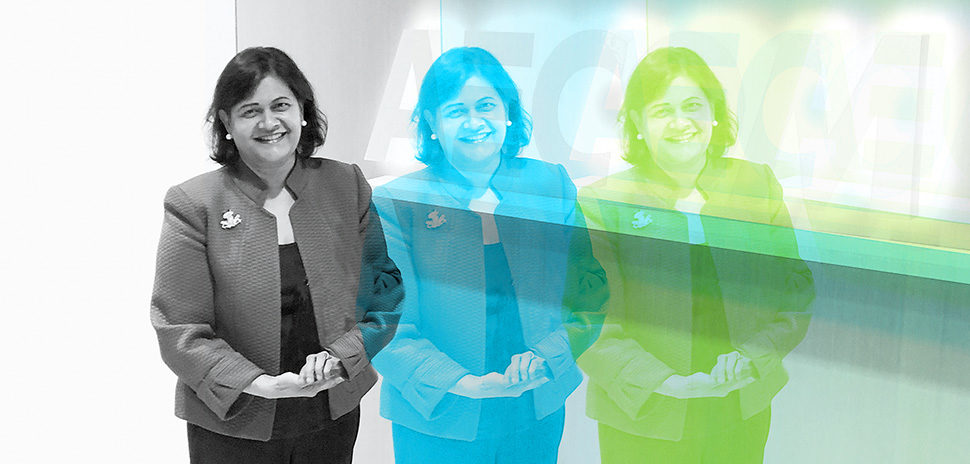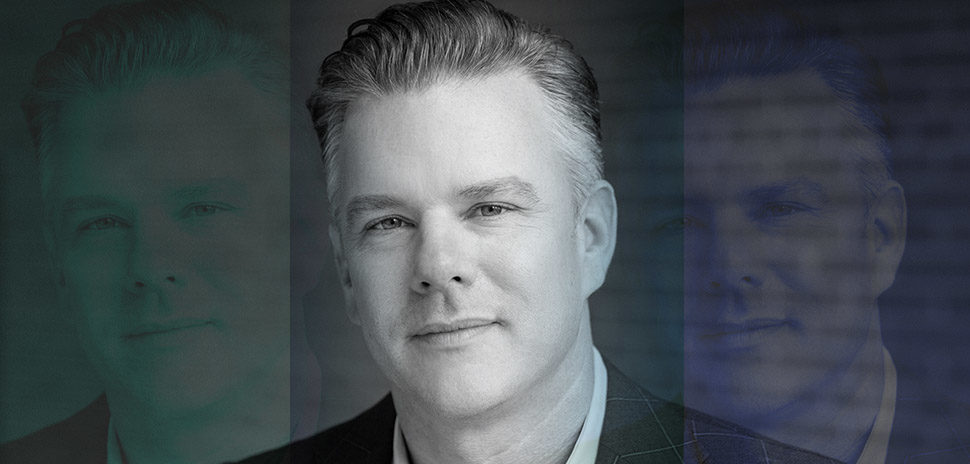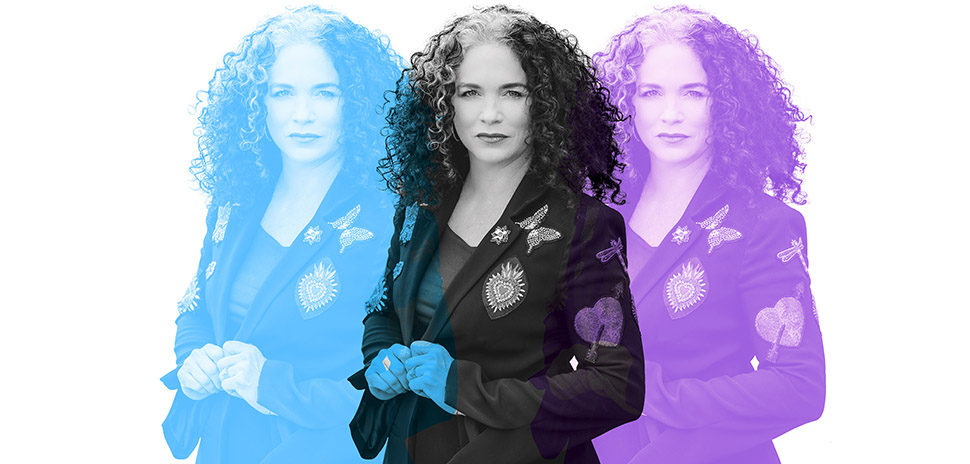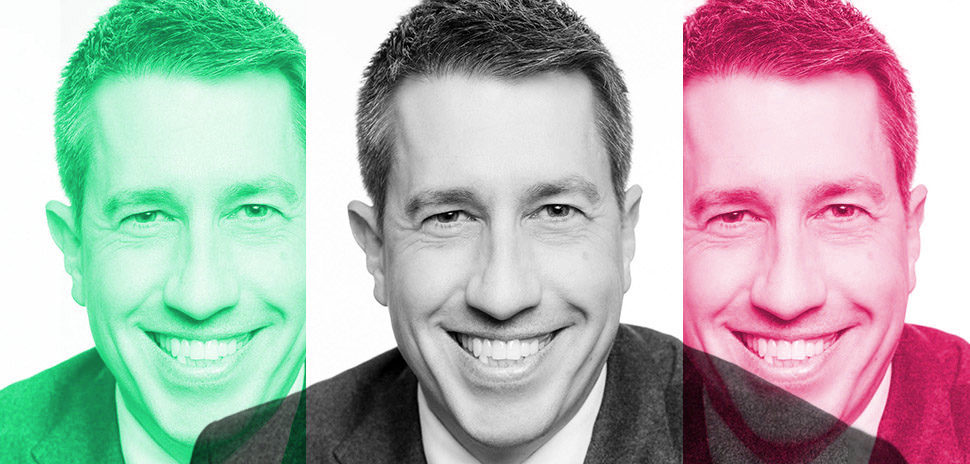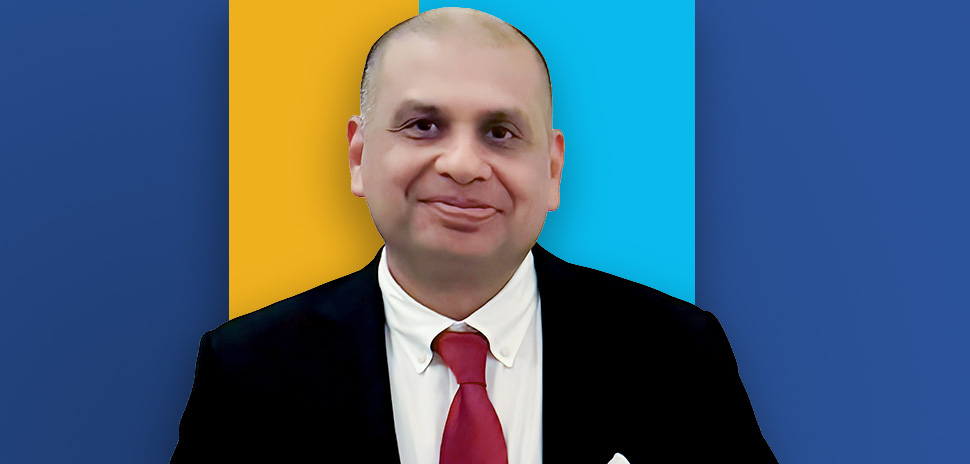Marjorie Zielke and her award-winning team at The University of Texas at Dallas are developing life-like virtual humans through the “forward-looking” Emergent Virtual Teacher Platform.
EDUCATION
Virtual Human Creator
Marjorie Zielke
The platform uses sensor capture, Internet of Things (IoT) technology, and speed aspects of 5G to deliver virtual teachers in virtual reality (VR) and holograms, according to a previous statement.
“This work was prescient and pre-pandemic,” she told Dallas Innovates. “My goal has always been to create a true virtual human hologram that can interact naturally with students and faculty to address the social and learning issues that currently exist in virtual learning systems.”
Zielke wins Tech Titans’ 5G Challenge
A winding road brought Zielke to create in-depth studies of virtual humans. She received a bachelor’s in journalism and an MBA and a master’s in international management studies before pursuing a doctorate in humanities – aesthetic studies, with a dissertation focused on teaching with tech. Zielke has been part of the UTD faculty since receiving her doctorate there in 2007. Seven years later, she established the Center for Simulation and Synthetic Humans.
And her work is earning her attention beyond academic circles.
In October, she won the inaugural 5G Challenge Award from Tech Titans. Finalists competed in a virtual “Shark Tank” style showdown with the “Shark” himself, Mark Cuban, among the judges. Charlotte Jones, Dallas Cowboys Chief Brand Officer, and Thaddeus Arroyo, CEO of AT&T Consumer, also took part in the judging panel.
During the video announcement of the winner, Arroyo said Zielke’s project was “very forward looking.”
“If you think about the pillars of 5G, she had three of the five: ultra-low latency, multi-access edge computing, and massive connectivity,” Arroyo said. “But when I think about it in terms of need and the societal impact… if you can bring parts of this to life, it can be big.”
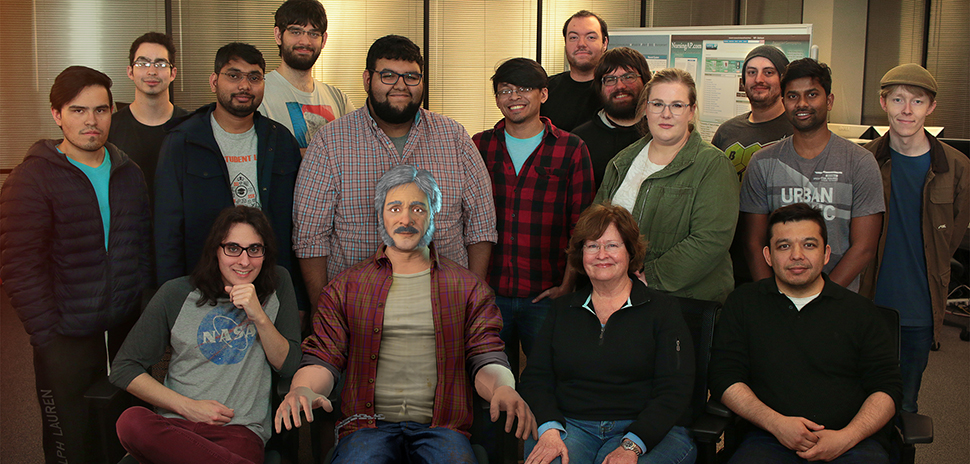
[Image via Tech Titans]
Using virtual humans to enhance real education
Zielke believes the work they’re doing—along with the issues that have emerged with COVID-19—will create a new type of hybrid learning worldwide.
“Educators I talk to do not believe that our learning processes will go back to exactly the way they were pre-pandemic because the use of digital resources has shown educators that many new possibilities exist to deliver learning experiences,” she said.
In 2020, her team received two National Science Foundation grants to support their research. A $750,000 grant over the course of three years paired the center with UT Southwestern to help medical school students better prepare for interactions with patients.
“In this research, we are exploring what role real peers, virtual peers, real professors and virtual professors play in learning about patient communication,” Zielke said in a statement.
Their virtual reality patients can exhibit symptoms and life-like emotions to help students develop nonverbal communication and diagnostic skills.
Working with the Richardson Independent School District through a $150,000 grant, Zielke is exploring “critical aspects of virtual education” that have become more evident in the past year.
“Research facets support social factors that have become crystalized,” she said. “We’re working on the development of both virtual teachers to extend the capability of human teachers and virtual students to explore social learning with peers.”
The UTD center also came up with a VR human simulation to help train police officers to spot impaired drivers. One of the key giveaways is the ability of the eyes to track movement. The synthetic driver can demonstrate the involuntary twitching that can be one of the most reliable indicators of impairment.
Next up, Zielke plans to study how virtual humans can help students with learning disabilities or who are English language learners. Both groups experienced major gaps with distance learning due to COVID-19.
“Virtual design and work strategies are the focus of my team …so due to unfortunate circumstances…we have been given a lot of encouragement on our research premises,” Zielke said. “This is exhilarating and inspiring for our team, and we take the responsibility very seriously.”
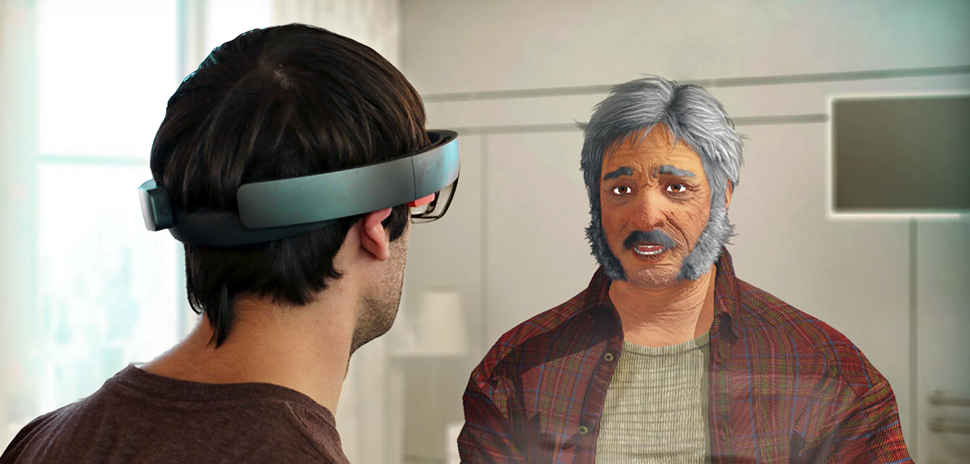
Sean Lenox, research engineer in the modeling and simulation lab at UT Dallas, uses the Microsoft HoloLens to test the functionality of virtual character “Walter” by asking questions and listening to his responses. [Photo: Courtesy UT Dallas]
Meet the innovator
Marjorie Zielke was featured in Dallas Innovates’ Future 50 in Dallas-Fort Worth in the 2021 edition of our annual magazine. We talked with Zielke about how her work grew in importance amid the pandemic and the future of virtual learning. Here’s a takeaway:
On her team’s important developments in 2020:
This past year we have received two National Science Foundation (NSF) grants to support virtual learning research – one from Cyberlearning and the other from the Smart and Connected Community group. In these research projects we are working with the Richardson Independent School District (RISD) and The University of Texas Southwestern Medical Center (UT Southwestern). These projects are exploring critical aspects of virtual education that have become even more evident during the Pandemic. For example, we are working on the development of both virtual teachers to extend the capability of human teachers and virtual students to explore social learning with peers. We are also exploring the creation of community-focused distributed virtual reality that includes hospital staff, RISD students, and high school faculty to develop student resilience and collaborative augmented reality which allows students to view virtual patients together and practice patient communication.
On the future of virtual learning:
This work was prescient and pre-Pandemic. Many of the research facets support social factors that have become crystalized in the past several months. Stress of the pandemic on teachers to teach in multiple teaching modalities such as face-to-face and online, the importance of social learning with fellow students, the need to effectively offer clinical experiences through simulation, and certainly the need for student resilience are now clearly identified challenges in virtual learning environments. In general, our national research investment on virtual learning environments has been inadequate. The reported devastating learning losses could be greatly alleviated with more advanced social and technology based digital learning systems. I believe the work we are doing, along with the clear issues that have emerged due to Covid, will create a new type of hybrid learning worldwide.
On the impact of COVID-19 and social inequalities:
Virtual education is particularly challenging to underserved groups. We know that much of education in a virtual environment falls on parents. We know that not all occupations translate to at home work. We know that students may need to go to work in these circumstances. We know that students with learning disabilities or English Language Learners need resources beyond video conferencing for their virtual education resources. We have put together explicit proposals with local education partners to request funding to work on exactly these issues.
On building a resilient team:
The most important thing for creating a resilient team is to embed this quality as an ongoing leadership strategy. On my team we ongoingly stress self-reliance and personal responsibility. We also get together virtually in unique ways besides staff meetings. We’ve attended virtual conferences together and had ongoing text side bars on how the information pertains to our research. We’ve participated in many digital events to learn from others what makes a dynamic virtual experience.
On what’s next for her AI platform:
We recently won the Tech Titan 5G Challenge. Part of the award is for potential mentoring with local companies. My idea has always been that we can create more life-like virtual humans with advanced technology such as high-speed networks and Internet of Things constructs. My goal has always been to create a true virtual human hologram that can interact naturally with students and faculty to address the social and learning issues that currently exist in virtual learning systems of which we are now clearly aware. These new resources through Tech Titans may rapidly advance our research implementation.
A version of this story was originally published in Dallas Innovates 2021: The Resilience Issue.
Read it online
Our fourth annual magazine, Dallas Innovates 2021: The Resilience Issue, highlights Dallas-Fort Worth as a hub for innovation. The collective strength of the innovation ecosystem and intellectual capital in Dallas-Fort Worth is a force to be reckoned with.
![]()
Get on the list.
Dallas Innovates, every day.
Sign up to keep your eye on what’s new and next in Dallas-Fort Worth, every day.

